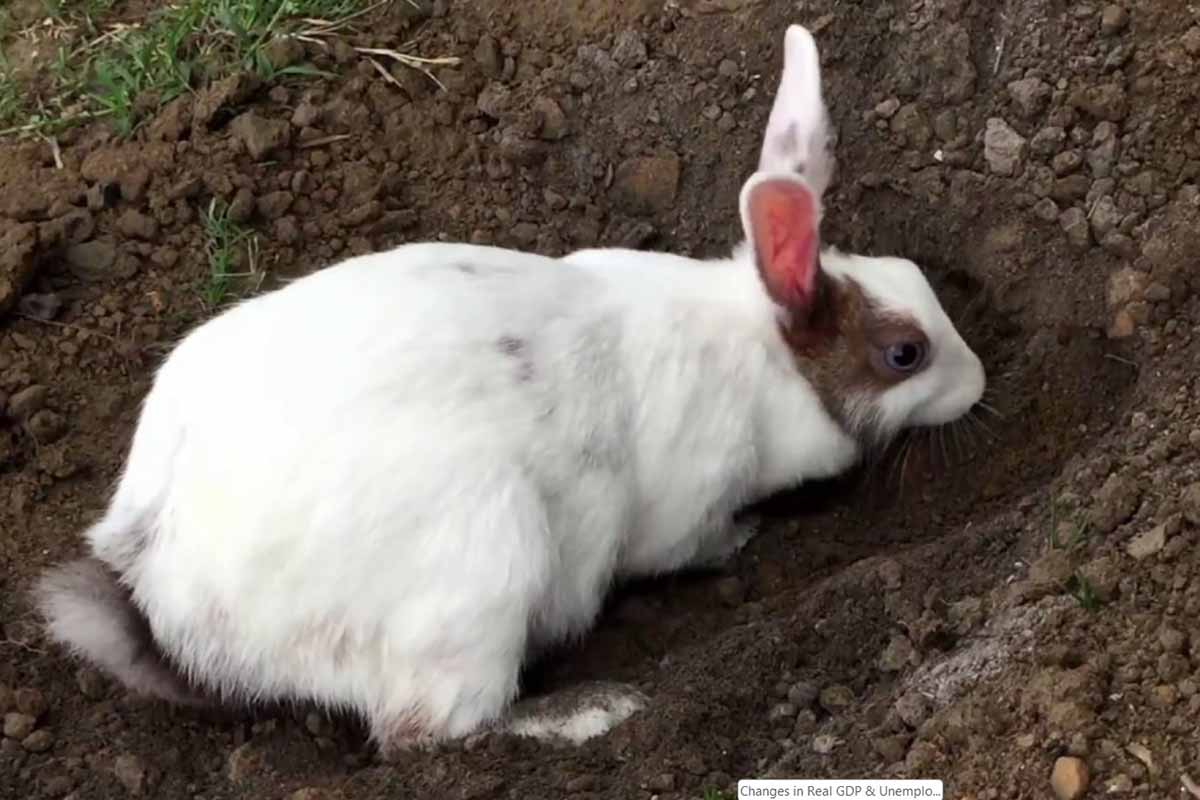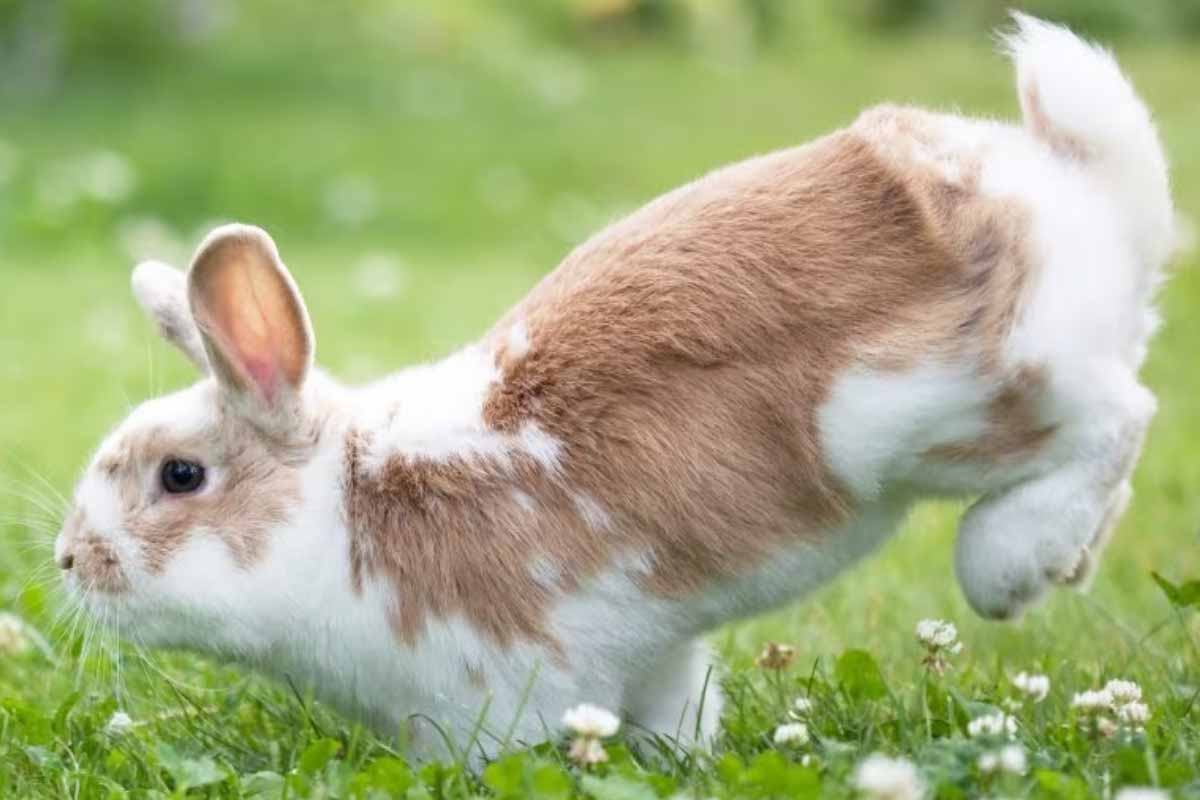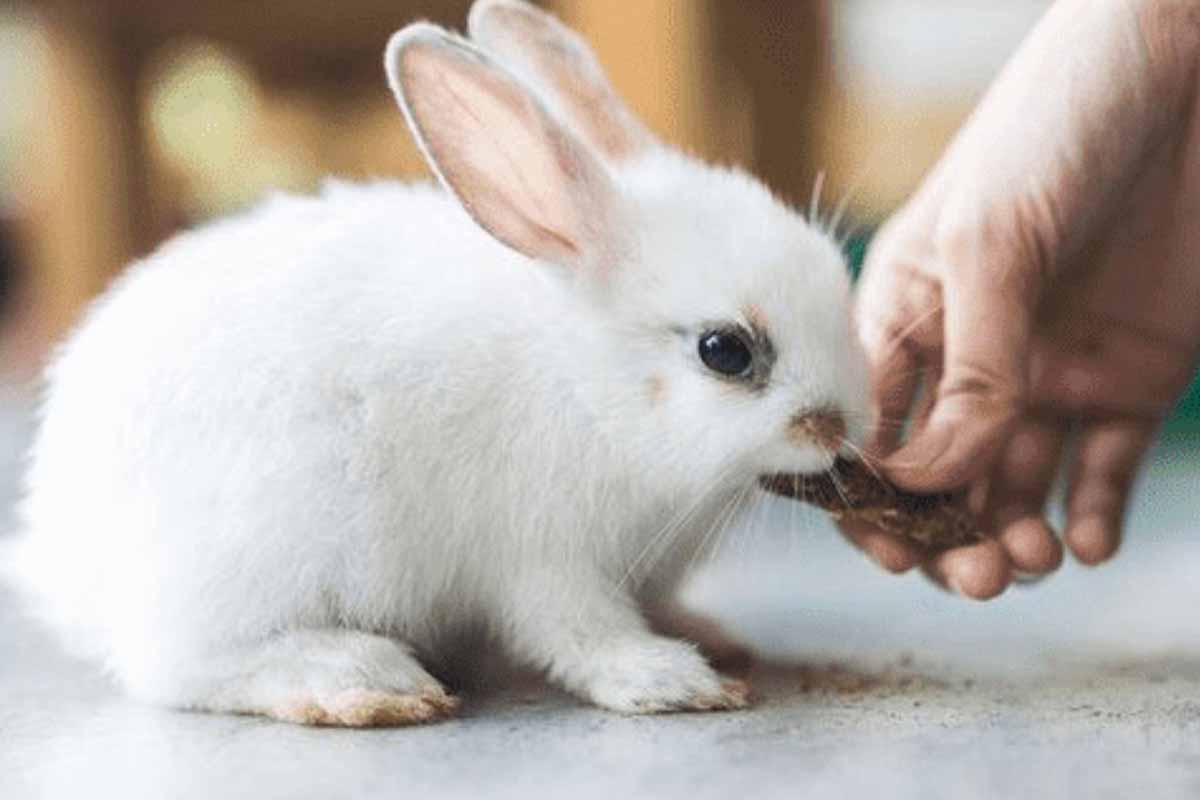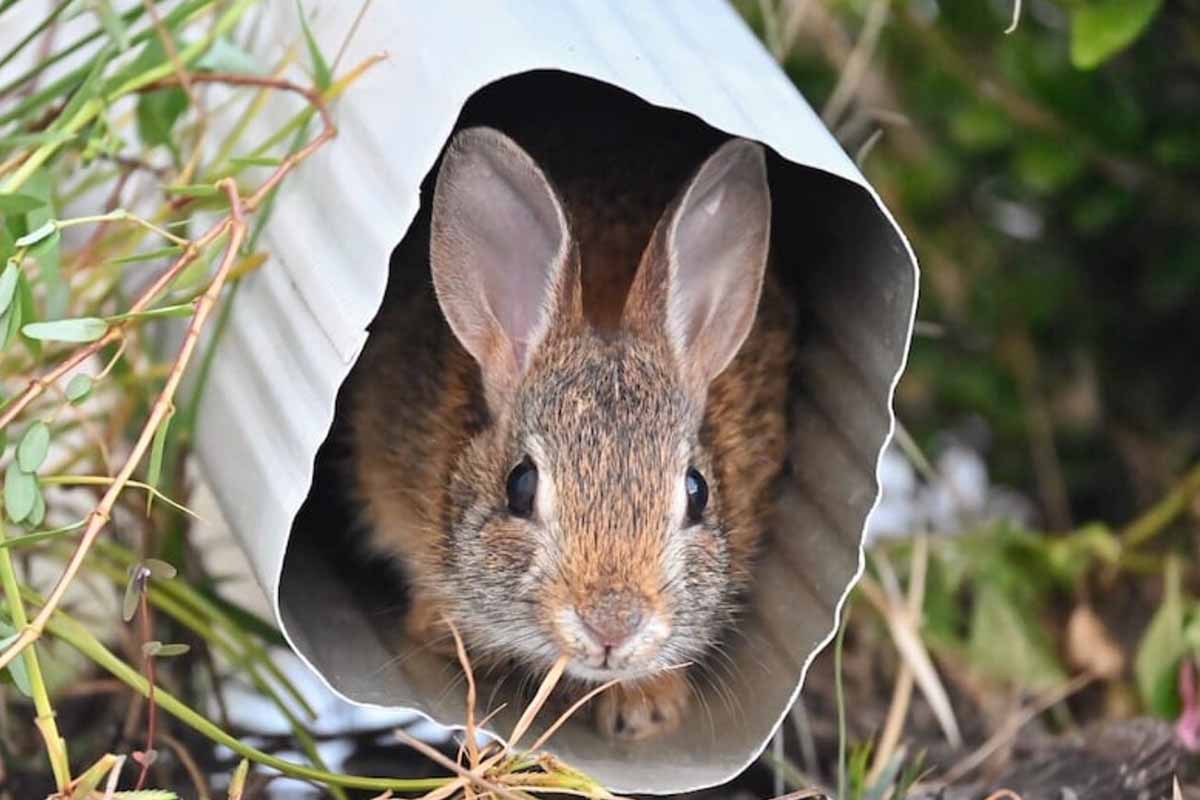Rabbits are delightful companions, bringing joy to our lives with their playful antics and gentle personalities. From their soft fur to their curious noses, they provide endless entertainment and affection. However, even the most adorable rabbit can sometimes exhibit behaviors that leave us scratching our heads. Digging sprees, litter box mishaps, and unexpected nips can quickly turn a cuddly friend into a furry frustration.
The key to a harmonious relationship with your rabbit lies in understanding their natural instincts and communication methods. By addressing the root cause of these “common rabbit behavior problems,” we can create a happy and stress-free environment for both you and your fluffy friend.
Common Rabbit Behavior Problems and Solutions
1. Digging

One of the most common (and sometimes destructive) rabbit behavior problems is digging. This isn’t a personal hatred against your carpet or favorite houseplant. Rabbits have a natural instinct to dig burrows in the wild, providing them with shelter, a place to raise their young, and a way to cool down. This digging urge can translate into your living room, leaving you with unsightly holes on the carpets and displaced throw rugs.
➮ Solution: Give Your Rabbit a Dig Zone
The key to curbing your rabbit’s digging exploits is to provide them with an acceptable outlet for this natural behavior. Create a designated digging box filled with shredded paper, hay, or other rabbit-safe materials. Place the box in a quiet corner of their enclosure and sprinkle it with some treats or herbs to encourage exploration. With a dedicated digging zone, your rabbit can fulfill their natural urges without causing chaos in your home.
2. Chewing

Another common rabbit behavior problems that rabbit owners face is their relentless chewing. This isn’t your rabbit being spiteful towards your furniture – it’s actually a vital part of their dental health. Rabbits’ teeth grow continuously throughout their lives. Chewing helps them wear down these ever-growing teeth, preventing them from becoming overgrown and causing painful health problems.
➮ Solution: Provide Chewing objects
To satisfy your rabbit’s natural urge to chew and protect your belongings, offer them a variety of safe and stimulating chew toys. Look for toys made from untreated wood, apple sticks, or hay-based chews. These provide the perfect texture for gnawing while also promoting healthy digestion. Rotate the toys regularly to keep things interesting and prevent boredom, which can also lead to destructive chewing.
3. Litter Box Issues

Many rabbit owners face the frustrating issue of litter box avoidance. While it might seem like your rabbit is trying to spite you, there are several reasons behind this behavior. Stress, caused by loud noises, new pets, or changes in their environment, can lead to litter box mishaps. A dirty litter box is another culprit – rabbits are naturally clean animals and won’t use a smelly or overflowing box. Underlying health issues, like bladder infections or urinary tract stones, can also cause litter box problems.
➮ Solution: Create a Proper Litter Box
To encourage your rabbit to use their designated bathroom, ensure the litter box is clean and accessible in a quiet location. Use a litter pan large enough for them to turn around comfortably and choose a rabbit-appropriate litter like recycled paper pellets or hay. Regularly scoop the litter box and completely change it every few days. If the problem persists after addressing these factors, consult your veterinarian to rule out any underlying health concerns.
4. Binky Throwing

Some rabbit behaviors might leave you confused, and the “binky throw” is a prime example. This isn’t a problem to be solved, but rather a delightful display of rabbit happiness. A binky throw is a series of excited jumps, twists, and flips your rabbit might do. It’s their way of expressing pure joy, often triggered by a yummy treat, playtime, or simply feeling content.
➮ Solution: Sit Back and Enjoy the Show
Consider the binky throw a victory lap for your rabbit care. When your furry friend explodes in a binky, it means they’re feeling happy, safe, and loved in their environment. So, the only solution here is to sit back, relax, and enjoy the adorable spectacle of your rabbit’s unbridled happiness.
5. Excessive vocalization (teeth grinding, thumping)
Rabbits may not be known for their booming barks, but they have a surprising array of vocalizations to communicate their needs and feelings. While a gentle purr or teeth grinding might be endearing, excessive vocalizations like constant thumping or loud squeaking can be concerning.
➮ Solution: Decode the Message
The key to addressing excessive vocalizations is identifying the underlying cause. Is your rabbit thumping incessantly because of loud construction noises from outside? Are they squeaking relentlessly due to a new pet in the house causing stress? Once you understand the reason behind the vocalizations, you can address the issue. Provide a quiet and secure environment, introduce new pets slowly, and ensure their basic needs are met to minimize stress-induced chatter. If the vocalizations persist even after addressing these factors, consult your veterinarian to rule out any underlying health problems.
6. Aggression
While rabbits are known for their gentle nature, they can sometimes exhibit aggression. This behavior can be startling, especially if your rabbit has always been friendly. Fear and territoriality are often the root causes of aggression in rabbits. They might lash out if they feel threatened by a new pet, sudden movements, or unfamiliar surroundings. Unneutered or unspayed rabbits can also display territorial aggression.
➮ Solution: Fostering a Peaceful Relationship
To prevent aggressive behavior, provide your rabbit with a safe and spacious environment where they feel secure. Proper socialization from a young age helps them feel comfortable around people and other animals. Avoid situations that might trigger their fear or territorial instincts. When interacting with your rabbit, move slowly and gently, and never approach them when they seem scared or agitated. With patience and positive reinforcement, you can build a trusting and peaceful relationship with your furry friend.
7. Spraying
Some rabbit owners might be surprised to discover their rabbit spraying urine around their home. This isn’t a personal hatred against your furniture. For unneutered or unspayed rabbits, spraying is a natural way to mark their territory. These territorial instincts can lead to unwanted spraying on furniture, walls, or even you.
➮ Solution: Put an end to it quickly by spaying or neutering
The most effective solution to curb spraying behavior is spaying or neutering your rabbit. This simple surgery reduces their urge to mark territory and significantly decreases spraying in most cases. Spaying and neutering also offers a multitude of health benefits for your rabbit, making it a win-win situation. If spraying persists even after spaying/neutering, consult your veterinarian to rule out any underlying medical issues.
8. Nipping

While a gentle nibble can be endearing, frequent nipping can become a nuisance. Rabbits nip for various reasons, including curiosity, trying to establish dominance, or simply seeking attention. If your fingers become a chew toy, it’s important to address this behavior to prevent them from associating hands with playtime.
➮ Solution: Redirect and Reward Good Behavior
The key to curbing nipping is to redirect your rabbit’s attention. Keep a supply of safe chew toys readily available and offer one whenever your rabbit starts nipping. Avoid rough play that might encourage nipping, and instead, focus on gentle petting and positive reinforcement. When your rabbit interacts with you calmly, reward them with a treat or praise to solidify good behavior. With consistent redirection and positive reinforcement, you can teach your rabbit that hands are for petting, not nipping.
9. Excessive Fur Pulling
Seeing your rabbit obsessively pulling out their fur can be alarming. This behavior can be caused by a variety of factors, including boredom and stress. If your rabbit lacks mental stimulation or feels anxious due to loud noises or a cramped space, they might resort to fur pulling as a coping mechanism. Underlying dental problems can also cause discomfort, leading them to pull at their fur around their mouth.
➮ Solution: Address the Root of the Problem
The key to stopping excessive fur pulling is to address the underlying cause. Enrich your rabbit’s environment with hiding spots, toys, and tunnels to keep them mentally stimulated. Ensure they have a spacious enclosure and minimize stressors like loud noises. Regular vet checkups and proper dental care can help identify and address any dental issues that might be causing discomfort. By providing a happy and healthy environment, you can discourage this destructive behavior and keep your rabbit’s fur looking its best.
10. Hiding

A rabbit constantly hiding can be a source of worry for owners. This behavior isn’t a sign of rebellion, but rather a sign your rabbit feels unsafe or scared. Sudden changes in their environment, loud noises, or even new pets can trigger this fear response, causing them to seek refuge in hidden corners.
➮ Solution: Build a Trustworthy Home
To encourage your rabbit to feel comfortable and secure, create a safe haven within their enclosure. Provide them with hiding spots like tunnels, boxes, or igloos filled with soft bedding. When interacting with your rabbit, avoid sudden movements or loud noises that might startle them. Approach them slowly and calmly, allowing them to initiate contact on their terms. With patience and a positive environment, you can build trust and coax your shy friend out of hiding.
At The End
In conclusion, understanding “common rabbit behavior problems” is the key to a harmonious relationship with your furry friend. By recognizing the reasons behind their actions, you can address the root cause and create a happy and stress-free environment. If certain behaviors persist, don’t hesitate to seek professional help from vets or rabbit behaviorists. Remember, a little patience and a willingness to learn rabbit language can lead to a rewarding and enriching bond with your delightful rabbit companion.













